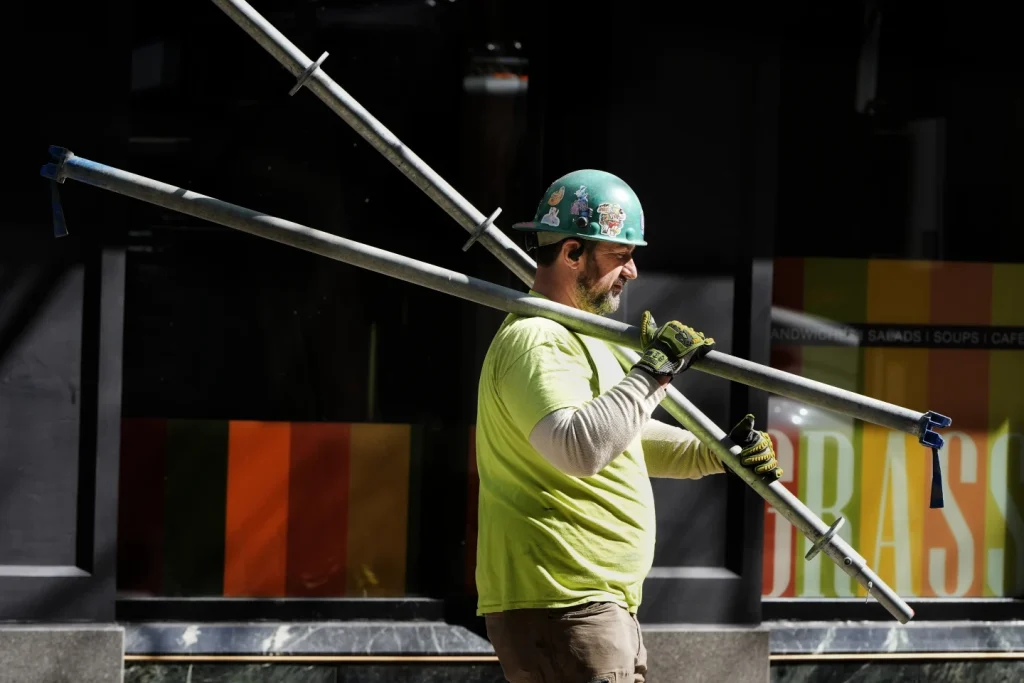The U.S. economy has often been regarded as a robust engine driving not only national prosperity but also global economic stability. However, recent reports reveal an unexpected downturn that has raised alarm bells among economists, policymakers, and the general populace.
The Labor Department’s announcement of a sharp reduction in hiring—where employers added a mere 114,000 jobs in July, significantly below the expected figure—coupled with the rise in the unemployment rate to 4.3%, represents a troubling development that could have far-reaching implications.
As Julia Pollak, chief economist at ZipRecruiter, aptly highlighted, “Things are deteriorating quickly.”
The current downturn in employment numbers is a reflection of various interconnected factors that have cumulatively strained both businesses and households.
The decrease in job creation, standing at 35% below projections, signifies potential vulnerabilities in sectors that were once considered resilient. Such a scenario is not merely a statistical aberration; it resonates with broader economic trends influenced by rising interest rates, which are designed to combat inflation but may inadvertently throttle economic activity.
The Federal Reserve’s determination to achieve a 2% inflation target underscores the delicate balance policymakers must navigate in a post-pandemic economy.
To contextualize the recent downturn, it is essential to acknowledge the exceptional job growth that characterized the U.S. economy’s rebound in the aftermath of pandemic-induced lockdowns.
Over the last several years, we witnessed an unprecedented trajectory in employment, with job creation peaking at record levels. The stark contrast between the earlier successes and the current challenges could not be more pronounced.
Now, as the U.S. economy is grappling with a myriad of pressures—including supply chain disruptions, geopolitical tensions, and climate-related events—factors such as Hurricane Beryl’s impact on the Texas economy have further complicated the employment landscape.
Indeed, the increase in the unemployment rate to 4.3% marks a troubling benchmark, having crossed a tripwire that economists have historically associated with recession signals.
It is critical to note, however, that the relevance of this particular gauge has been questioned, particularly in the context of the structural shifts in labor markets observed in the post-pandemic era.
While traditional metrics of economic performance have their place, the nested complexity of current challenges necessitates a nuanced understanding of economic indicators.
The composition of job gains in July underscores the uneven nature of employment across different sectors.
With approximately 64,000 jobs added in healthcare and social assistance—accounting for over half of total hiring—the reliance on certain industries for employment growth reveals systemic dependencies that could pose risks in times of economic volatility.
Conversely, the hospitality sector, which added 26,000 jobs, exhibits a recovery trajectory, yet it remains susceptible to fluctuations linked to consumer discretionary spending and external shocks.
Moreover, labor department revisions—which clipped 29,000 jobs from the payroll totals for May and June—illuminate the variability and unpredictability that now characterize job growth.
The current pace of job generation, averaging 203,000 per month this year as opposed to 251,000 in the preceding year, further indicates a deliberate cooling of the workforce market.
This slowdown invites speculation about employer strategies, suggesting a trend of cautious optimism encapsulated in temporary layoffs and furloughing practices aimed at preserving operational capacity amid prevailing uncertainty.
The timing of this downturn is particularly crucial, coinciding with the approach of the November presidential election.
Voter sentiment is intricately tied to economic performance, and the palpable discontent surrounding inflationary pressures continues to overshadow recent employment gains.
Many Americans, grappling with everyday inflation that lingers approximately 19% higher than in spring 2021, feel less optimistic about their economic future—despite the job market’s historical highs. This disaffection could galvanize voter mobilization, with economic concerns likely shaping electoral narratives.
The Sahm Rule, which posits that a half-percentage-point rise in unemployment often signals the onset of recession, serves as a timely reminder of the importance of monitoring labor markets closely.
The recent increase to 4.3% unemployment has exceeded this threshold, potentially signaling an economic environment fraught with uncertainties.
Beyond the immediate implications for job seekers and employers, shifts in labor market dynamics have the potential to redefine consumer behavior and overall economic sentiment.
The U.S. economy stands at a crossroads, where recent job growth setbacks, exacerbated by rising interest rates and potential recession signals, compel stakeholders to reevaluate strategic responses.
As the Federal Reserve navigates the tension between mitigating inflation and fostering economic growth, the labor market’s future trajectory remains uncertain. Moving forward, it is imperative for businesses, policymakers, and consumers alike to adopt strategies that promote resilience in a landscape marked by volatility and unpredictability.
Only through comprehensive analysis, targeted interventions, and adaptive strategies can the U.S. economy aim to restore its vigor and continue its role as a cornerstone of global economic stability.
In the current economic landscape, amidst the complexities of shifting employment trends and evolving labor demographics, Sahm, the chief economist at New Century Advisors, has articulated a perspective that challenges the conventional narrative surrounding imminent recessionary pressures.
Despite the potential activation of the Sahm Rule, which typically signals economic downturns, he asserts that the present indicators do not necessarily foretell a forthcoming recession.
This assertion gains credence when considering the pronounced impact of a significant influx of immigration—predominantly illegal—over recent years, which has substantially altered the dynamics of the American labor market.
The influx of new arrivals has, on one hand, alleviated persistent labor shortages observed across various sectors; however, this has also led to a paradoxical increase in unemployment figures, as many of these immigrants have yet to secure stable employment and may be underrepresented in official Labor Department surveys.
Concurrently, the Federal Reserve’s upcoming decision on interest rates has generated considerable anticipation, particularly with indications that a reduction from the existing rate of 5.3% is likely in September.
Economists and market observers are advocating for more aggressive rate cuts in response to the recent deceleration in hiring, although Fed Chair Jerome Powell has tempered expectations by downplaying the likelihood of such drastic measures.
For small business owners, like Chris Maher of OceanFirst Bank, the alleviation of borrowing costs could be a decisive factor in revitalizing hiring practices, particularly for sectors such as home construction and automotive sales.

However, the apprehensions are palpable, as exemplified by Sarah Trubnick of the Barrel Room in San Francisco, whose once-thriving establishment has encountered unforeseen declines in patronage, resulting in workforce reductions—an unsettling trend for a long-established enterprise that had previously navigated the economic waters with relative confidence.
Furthermore, the Labor Department’s revealing statistics, which indicate that approximately 1.88 million Americans were claiming unemployment benefits as of July 20, mark the highest figures since November 2021, underscoring the struggles faced by countless individuals in the job market.
Amidst this backdrop, voices like that of Julian Cannon, a 34-year-old New Yorker who has tirelessly sought new employment after a series of unsuccessful interviews, embody the uncertainty and frustration permeating the workforce, highlighting a pressing need for comprehensive strategies to address the multifaceted challenges currently besetting the economy.
